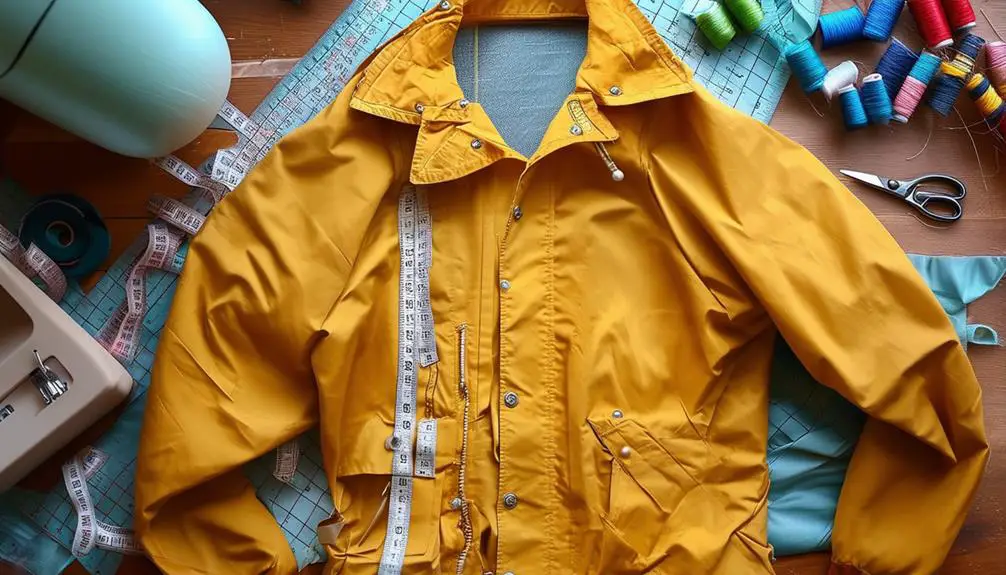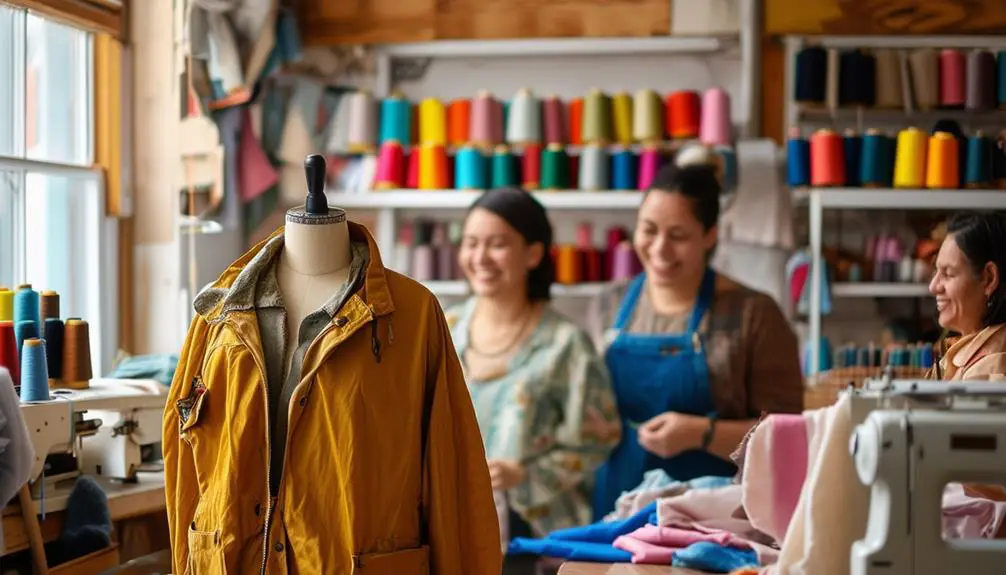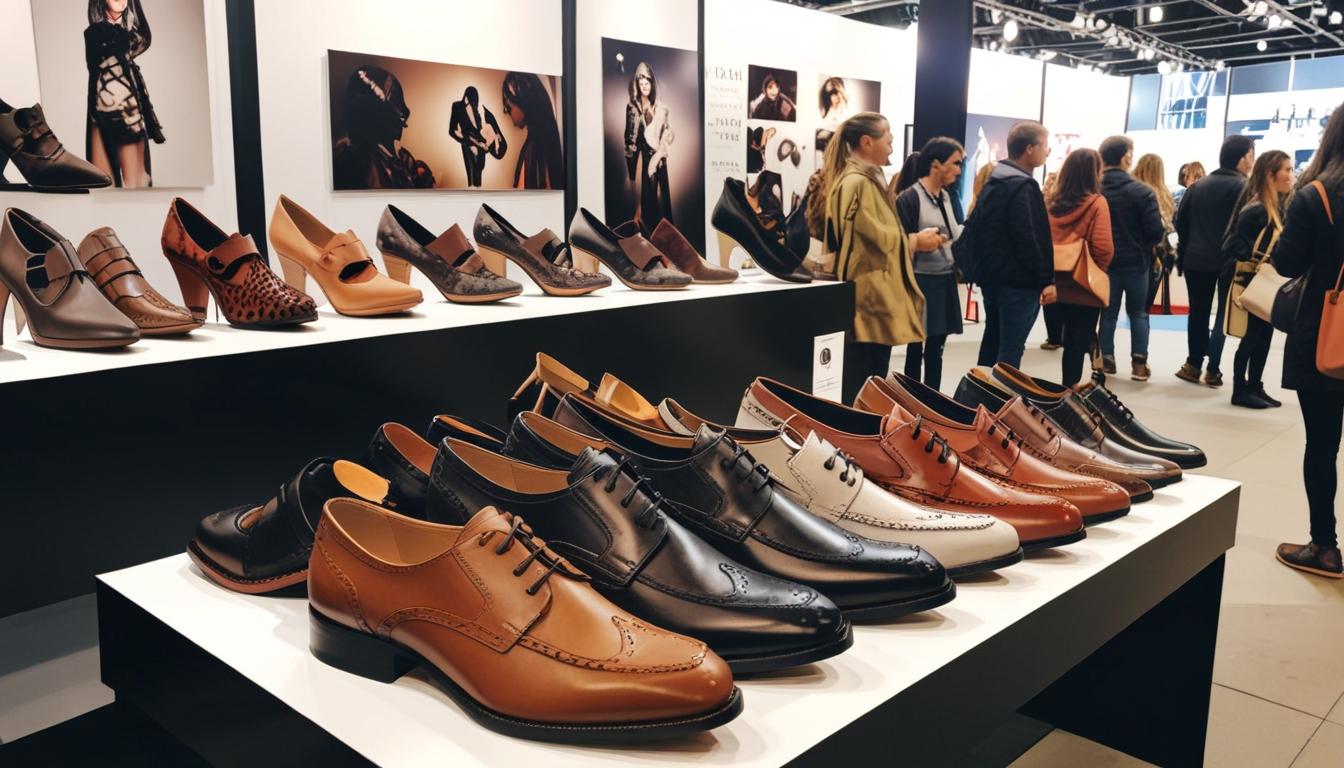Tailoring a vintage windbreaker is all about creating a fit that both flatters and showcases your style. Start by tackling those bulky side seams—taking in about 5 cm on each side boosts your silhouette. Don't forget to raise the armholes slightly for a sleek look while keeping comfort. If your jacket sports shoulder pads, removing them gives it a modern vibe. Finally, adjust the sleeves to guarantee they hit just right. Each stitch not only enhances the fit but also connects you to the garment's history, leading you to a piece that feels uniquely yours. Want to discover more tips?
Understanding Vintage Sizing Challenges

When diving into the world of vintage windbreakers, you'll quickly discover that sizing isn't as straightforward as it's with modern pieces. Vintage jackets often boast unpredictable fits because their sizing standards differ greatly from today's measurements. You might find that a size labeled as "medium" feels bulkier than expected, thanks to outdated design elements that prioritize comfort over a tailored look.
Understanding the historical context of these garments can enhance your ability to identify genuine vintage pieces, particularly when examining the unique labels and construction techniques typical of different eras, including insights on vintage clothing labels.
As you explore these unique pieces, keep in mind that the fabric quality can be exceptional, but achieving a flattering fit often requires careful adjustments. You may encounter challenges like excess fabric in the waist and shoulders, which can detract from the overall aesthetic.
To streamline your vintage windbreaker, consider the side seam and how it can be tailored to hug your frame just right. When you pull out your sewing machine for alterations, remember to respect the jacket's original design. Your goal is to enhance its charm while ensuring it fits you like a glove.
Key Alterations for a Better Fit
Achieving the perfect fit for your vintage windbreaker can transform it from a dated piece into a stylish staple in your wardrobe. Start by tackling the side seams; taking them in will eliminate excess bulk, enhancing the silhouette and banishing any baggy appearance.
Understanding the original vintage tag importance can also help you appreciate the garment's uniqueness. Next, consider the armholes—raising them slightly can provide a tailored look while still allowing for movement.
If your jacket features shoulder pads, removing them is a game-changer. This alteration creates a more natural shoulder line, instantly modernizing your windbreaker's overall vibe.
Don't forget the sleeves; shortening them can greatly improve the fit without sacrificing style. Aim for sleeves that align comfortably with your arm length for a polished finish.
Lastly, focus on the waist—taking in about 5 cm (2.5 inches) from each side can carve out a flattering hourglass shape. This simple adjustment makes your windbreaker not just a jacket, but a fashion statement.
Step-by-Step Alteration Process

Transforming your vintage windbreaker into a custom-fitted piece involves a straightforward yet rewarding alteration process.
Start by carefully unsewing the inlay seams and removing the sleeves, making sure to mark them as right and left. This'll help you reattach them correctly later.
Next, adjust the side seams to create a flattering hourglass figure, typically removing around 5 cm (2.5 inches) from each side. This adjustment will enhance your silhouette and improve your experience wearing the jacket.
Once you've tailored the body, use a template for resizing the sleeve holes, ensuring a perfect fit for the sleeves when you set them back into place.
After making these adjustments, reattach the sleeves and close the inlay seams.
It's essential to maintain the original length of the old jacket to preserve its vintage aesthetic, ensuring a flowing silhouette that looks effortlessly chic.
Emotional Considerations in Tailoring
Tailoring a vintage windbreaker isn't just about altering fabric; it's a journey into the garment's soul. As you prepare to make alterations, you might feel a rush of nervousness. After all, this piece carries a unique history—every stitch tells a story, much like the vintage clothing labels that offer insight into its origins.
The emotional connection you develop with the windbreaker heightens the stakes; you're not just changing a garment, but reinterpreting its legacy.
Consider the balance between preservation and personalization. While you want to make the windbreaker fit you perfectly, there's a lingering worry about losing its intrinsic value. Each snip of the scissors and each stitch can evoke a sense of trepidation, reminding you of the garment's past.
Yet, successfully tailoring it transforms not just the fit but your relationship with the piece.
When you see the finished product, the immense satisfaction is palpable. You've turned a vintage item into a flattering, personalized expression of your style.
Embrace the emotional journey—your windbreaker becomes more than clothing; it becomes a canvas for creativity, rich with respect for its history while celebrating your individuality.
Engaging With Tailoring Communities

Connecting with tailoring communities opens up a vibrant world where passion for vintage fashion thrives. Engaging in forums like Ask MetaFilter allows you to share experiences and gather insights on vintage garment alterations that can transform your windbreaker. Here, you can discover tips and tricks from seasoned enthusiasts who understand the nuances of working with timeless pieces.
Don't underestimate the power of local tailors; building relationships within your community can lead to personalized services that elevate your style. You'll not only find skilled professionals but also a support network that encourages your creativity and confidence in altering those cherished garments.
Social media, especially platforms like TikTok, showcases the exciting trend of sustainable fashion through upcycling. Join these conversations and participate in workshops to enhance your skills while learning from fellow vintage aficionados.
These connections provide emotional support, easing any nerves you might feel about making alterations. Embrace the joy of collaboration and growth within tailoring communities, and you'll find that your vintage windbreaker will transform into a unique piece that reflects your personal style.
Frequently Asked Questions
Can Windbreakers Be Tailored?
Absolutely, you can tailor windbreakers! Adjusting the fit can elevate your style, creating a sleek silhouette. Just remember to consult a skilled tailor to maintain the jacket's functionality while achieving that perfect, trendy look.
Can Nylon Be Tailored?
Yes, you can tailor nylon, but it takes some finesse. Use a walking foot to prevent shifting, keep seam allowances narrow to avoid puckering, and always check heat settings when pressing to maintain fabric integrity.
Can Waterproof Jackets Be Altered?
Yes, waterproof jackets can be altered, but you'll need a skilled tailor experienced with technical fabrics. They'll help maintain the jacket's integrity while ensuring you get the perfect fit without sacrificing its waterproof features.
Can Tailors Alter Winter Jackets?
Yes, tailors can alter winter jackets! You can expect adjustments like sleeve lengths and side seams for a better fit. Just remember, more complex changes might not be feasible due to the jacket's structure.





as soon as I observed this site I went on reddit to share some of the love with them.
Can you be more specific about the content of your article? After reading it, I still have some doubts. Hope you can help me. https://www.binance.info/si-LK/register?ref=LBF8F65G